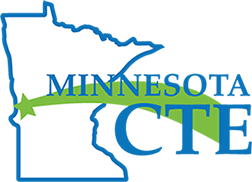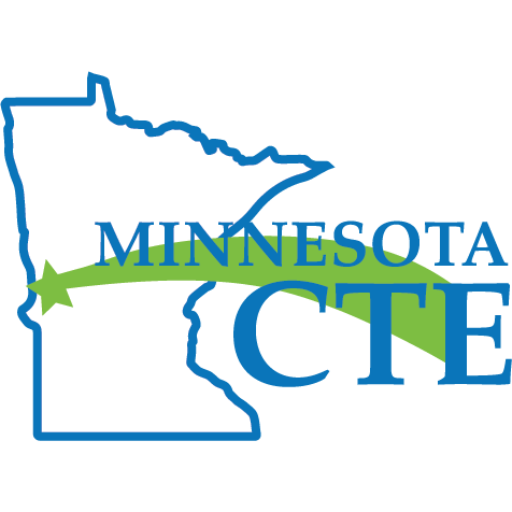Health/Human Services Education (HSE)
Caring for Communities

Background
Health/Human Services Education (HSE) prepares individuals for employment in a wide range of health, medical, safety, and education occupations, including nursing, teaching, emergency, dental, and other human services careers. HSE careers relate to planning, managing, and providing health services, education services, health informatics, safety and support services, and biotechnology research and development.
HSE is one of the newest of the Career and Technical Education (CTE) areas, created in 1956 by the George-Barden Amendments, a successor of Smith-Hughes (1917). HSE has evolved in the more than 60 years from medical careers to broader areas of community health including education and public safety. The student organization for HSE, HOSA – Future Health Professionals was formed in 1976 originally as the Health Occupations Students of America. As of 2024, more than 47 districts offer HSE programs in Minnesota, including 86 teachers and 7,930 students grades 7-12.
HSE comprises the Health/Human Services Education career field on the federal Career Wheel. HSE includes three clusters: (a) Education, (b) Healthcare & Human Services, and (c) Public Service & Safety.
Licenses for this area include:
– Broad-based license for the entire HSE field: does not exist yet in Minnesota.
– Careers license for the Education cluster: Early Childhood careers-300500.
– Careers license for the Healthcare & Human Services cluster: Medical careers-300300.
– Careers license for the Public Service & Safety cluster: does not exist yet in Minnesota.
– Pathway license for the Personal Care Services pathway: Cosmetology career pathways-092602.
– Pathway license for the Public Safety and Military & National Security pathways: Law Enforcement career pathways-092603.
– Cross-cutting career-license for the Digital Technology cluster: Communication Technology careers-300000.
– Cross-cutting careers license for the Management & Entrepreneurship cluster: does not exist yet in Minnesota.
– Cross-cutting career-license for the Marketing & Sales cluster: does not exist yet in Minnesota.
Minnesota is Focused on Caring for our Communities
Minnesota is committed to developing, building, and promoting health and life science technologies across a broad swath of industries—including medical devices, health care, pharma, biotech, health IT, biomaterials/biofuels, and more. Minnesota is known as Medical Alley—the number one Health Tech Cluster in the world. We’re home to the nation’s largest private health insurer and more than 800 partner organizations in the health care industry around the world. The Smithsonian has recognized six “Great Places of Invention” in the United States, including only one for health care: Minnesota.
- 1st Hospital (Mayo Clinic) in the Country (U.S. News and World Report, 2016-2022)
- 1st Health Cluster in the World (DEED, 2024)
- 1st Top State for Health Care (WalletHub, 2023)
- 1st in Pacemakers Related Patents per 1 Million People (US Patent Office, 2023)
- 1st in Implantable Medical Device-Related Patents (US Patent Office, 2023)
- 4th in Total Medical Device Patents (US Patent Office, 2023)
- 6th in Medical Device Registration (DEED, 2023)
- 12th in R&D expenditures among public universities in the U.S. (DEED, 2023)
Minnesota HSE Companies

Three Components of Health/Human Services Education (HSE)

HSE Courses and Labs
Academic, Rigorous Instruction
Health/Human Services Education (HSE) prepares students for high wage, high skill, and in demand jobs and careers in nursing, emergency, dental, and other medical careers. HSE deeply integrates science and math, ideally while meeting high school graduation requirements and earning college credit and industry certifications. HSE is contextual, combining classroom and laboratory, often making heavy use of project-based learning.
Essential elements include: career awareness, exploration, and preparation; programs of study based on industry; and a balance of classroom and laboratory instruction, which uses technology.

HSE Work-Based Learning
Technical, Relevant Experience
Students learn best by doing. A work-based learning (WBL) project is an extension of the classroom, where students develop specific technical and career knowledge that prepares them for their future. Within HSE, students begin exploring careers of interest, followed by relevant experiences with hospitals and medical industry, most often through internships, clinicals, or simulated School-Based Enterprises at the school such as a school clinic.
Essential elements include: work-based learning opportunities guided by training agreements and training plans; safety instruction and policies.

Minnesota HOSA
Affective, Relationships/Leadership
HOSA is the Career and Technical Student Organization (CTSO) for HSE and is available to any student who has taken a course in HSE or is pursuing a career in the health professions. Minnesota HOSA develops leadership and technical skill competencies through a program of motivation, awareness, and recognition as an integral part of an HSE program. State membership as of 2023 was more than 1,800 students in 54 HOSA chapters.
Essential elements include: leadership development opportunities through student organizations or other means.
Career Clusters within HSE
Courses in Health/Human Services Education
HSE State Leadership and Professional Organizations



HSE Teacher Preparation and Mentoring

Advanced mentoring and induction for those who have recently completed a teacher preparation program (Tier 3) or those who have completed CTE-TIP (Tier 2 or Tier 3) and need license-specific support to build a program, design and adopt curriculum, and enhance their teaching and pedagogy.



















